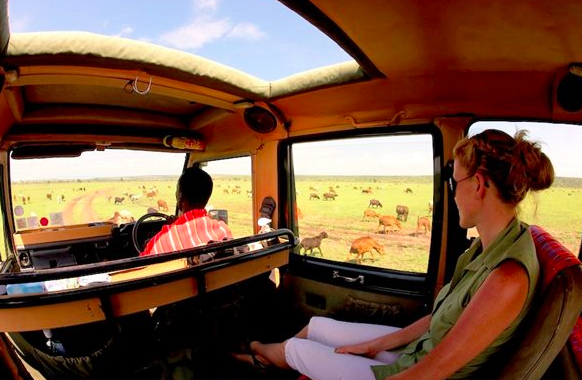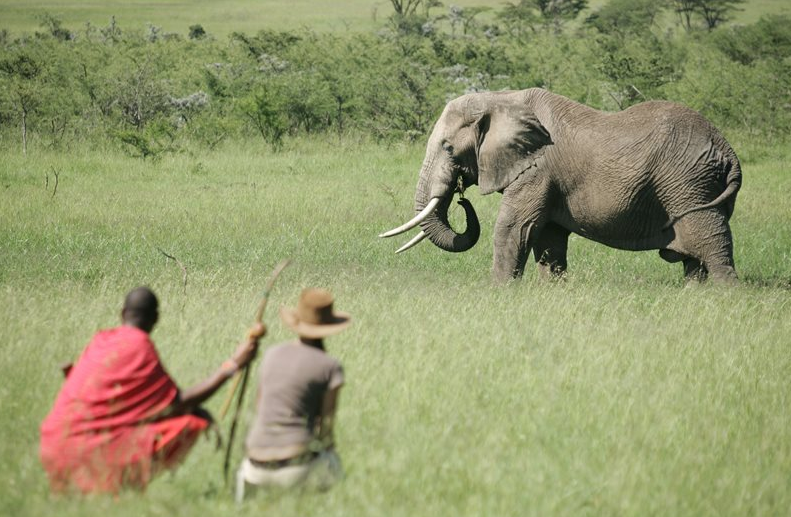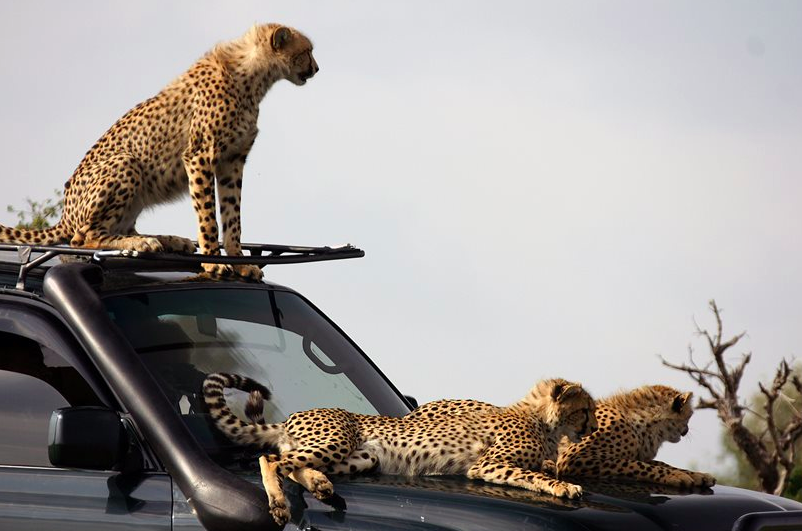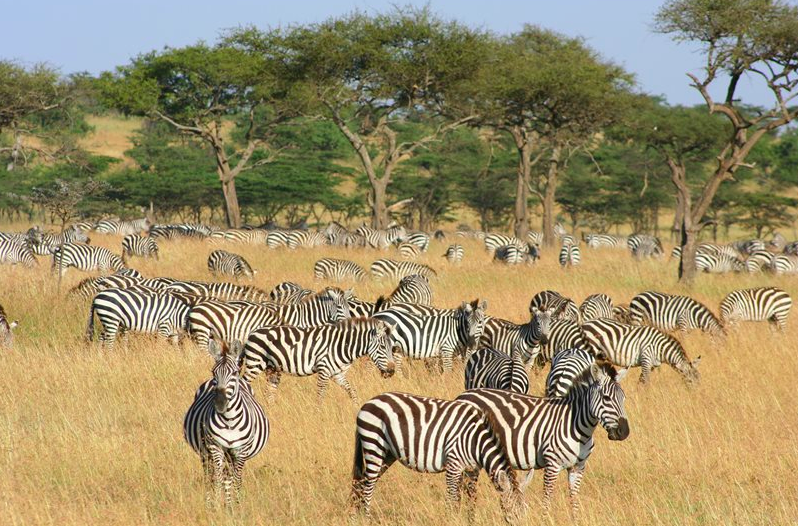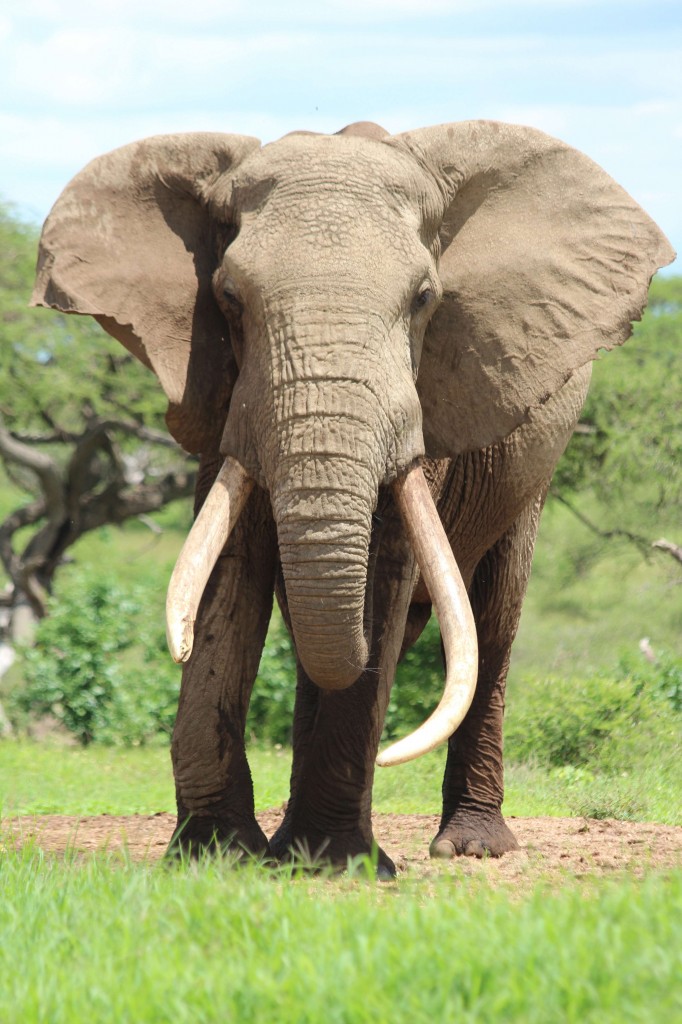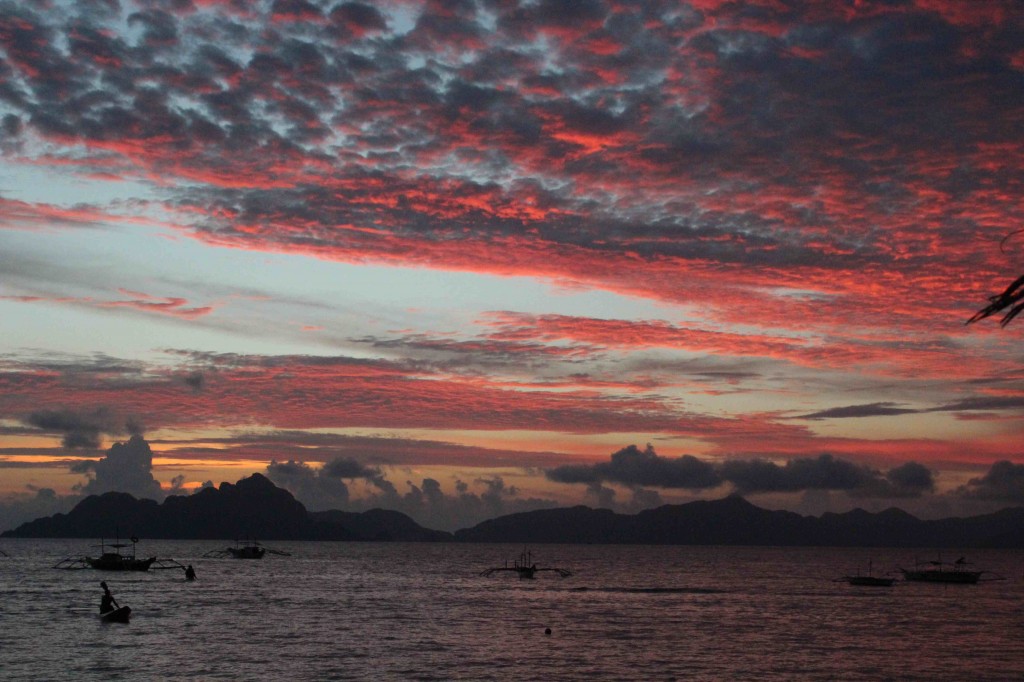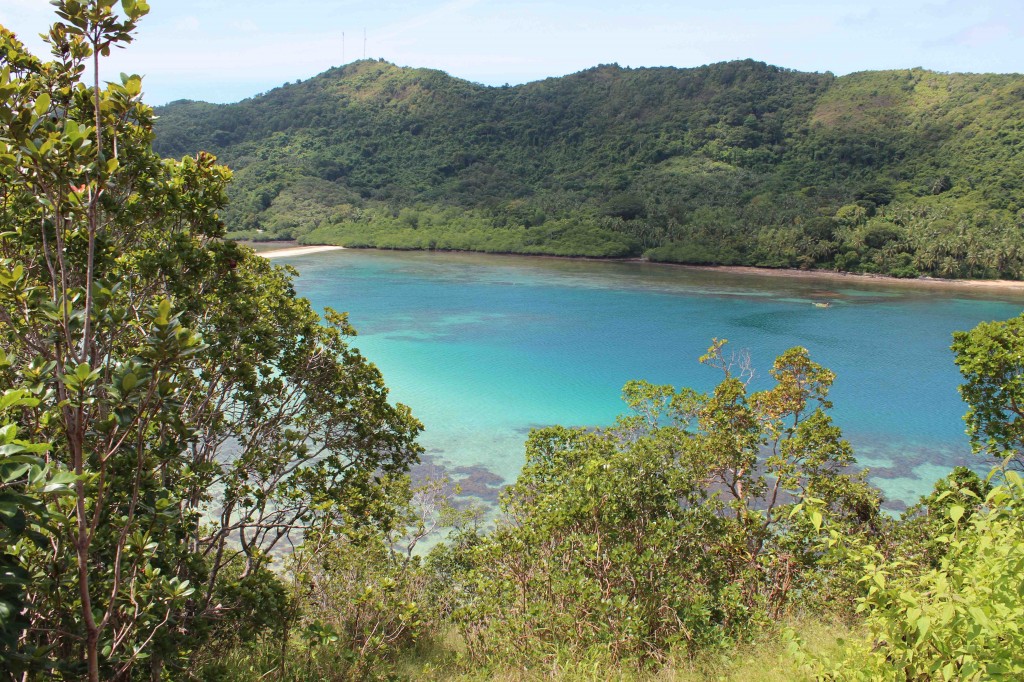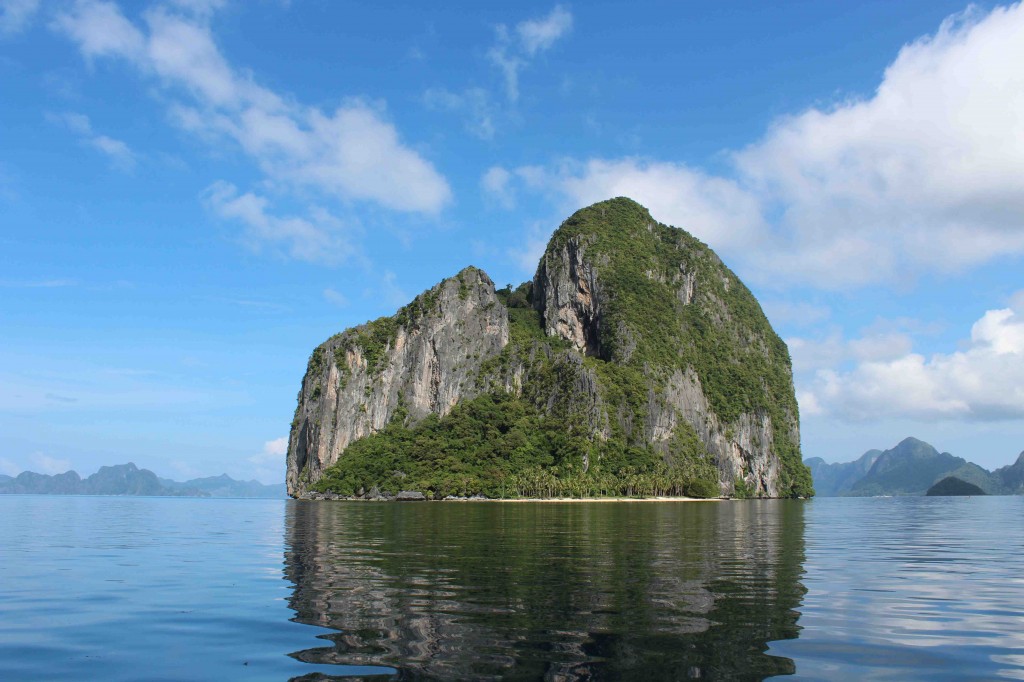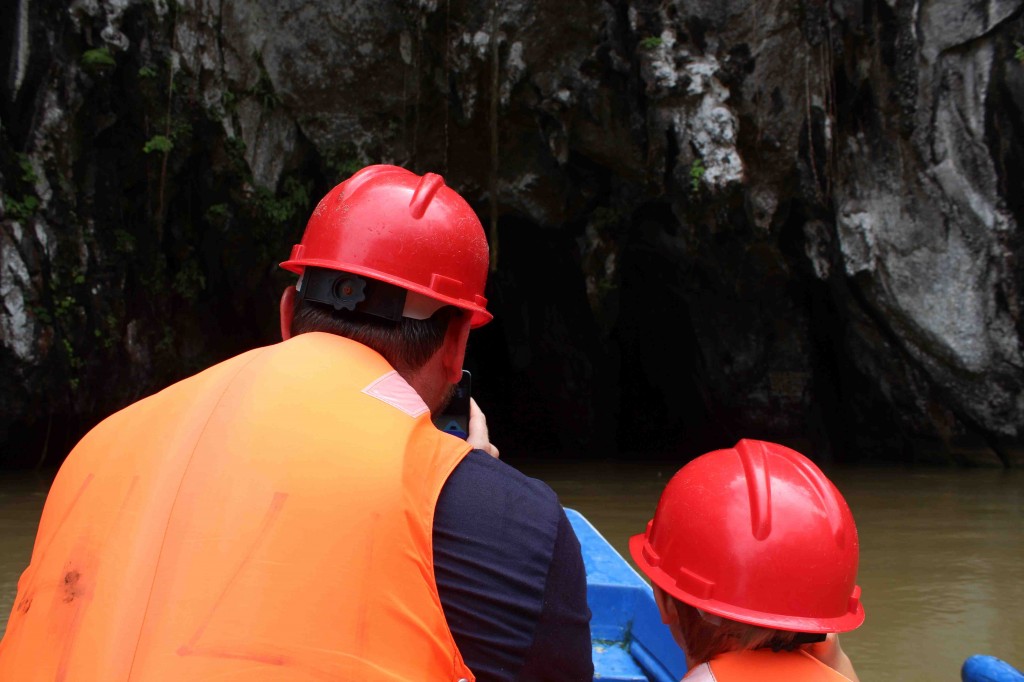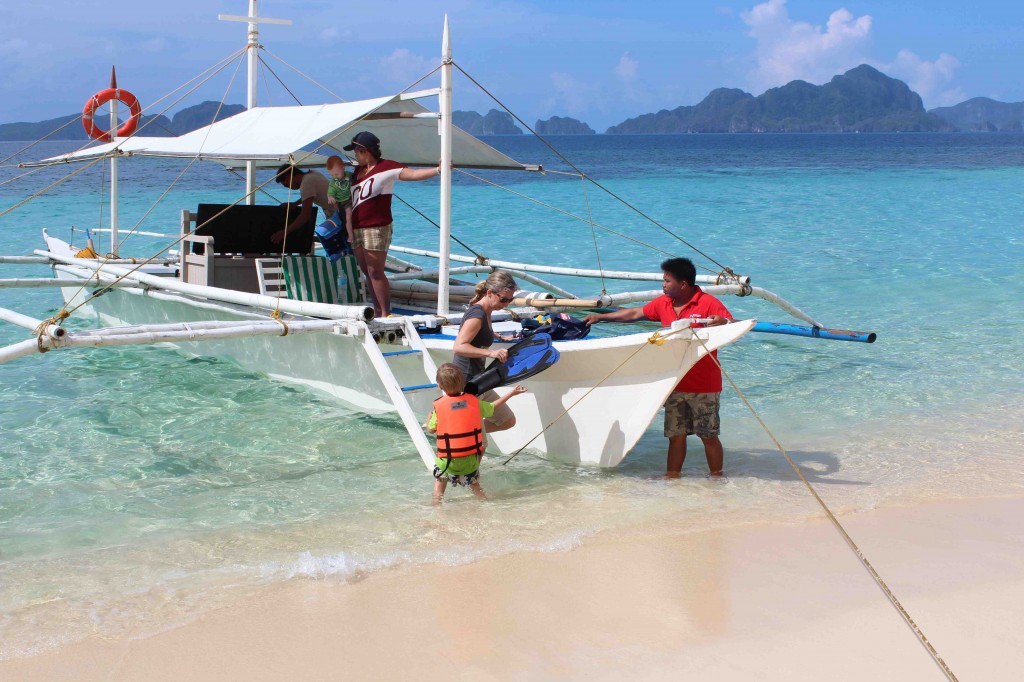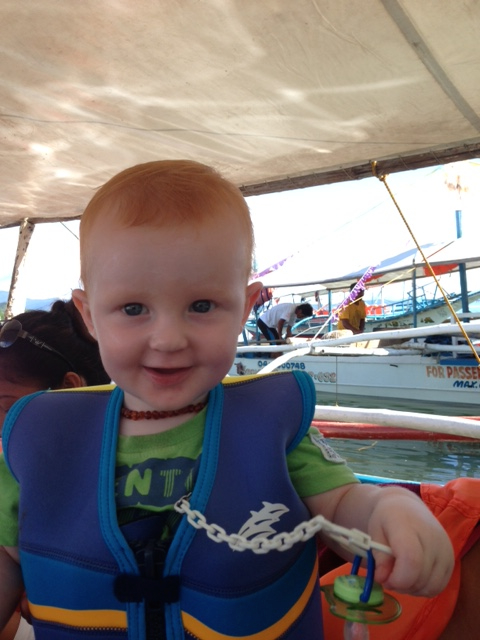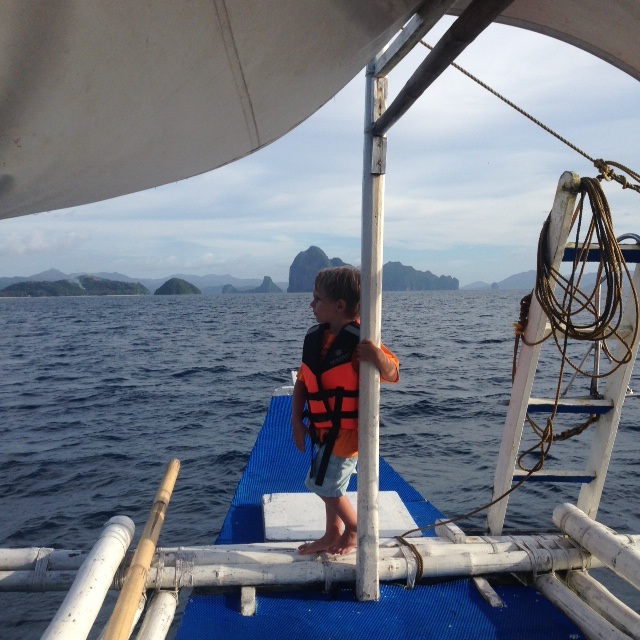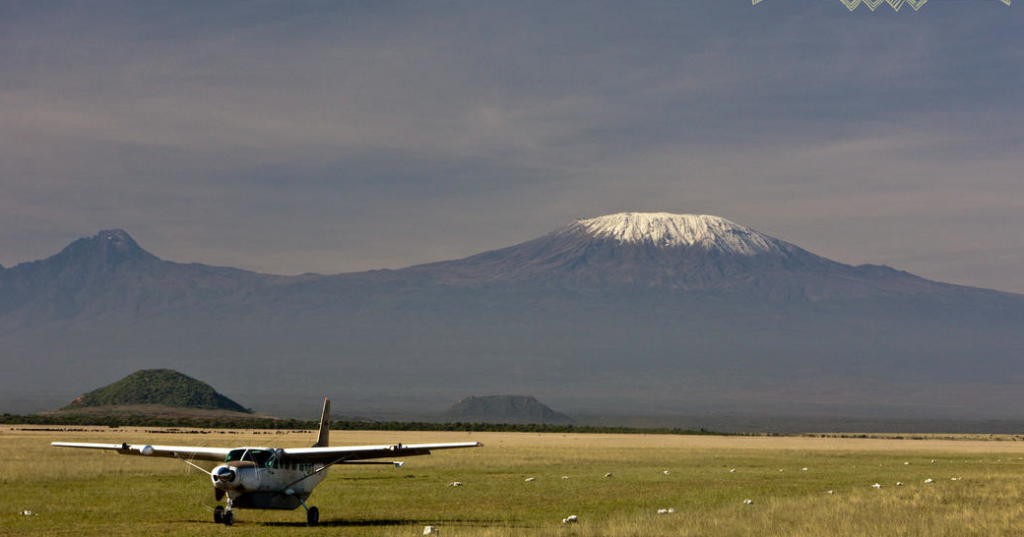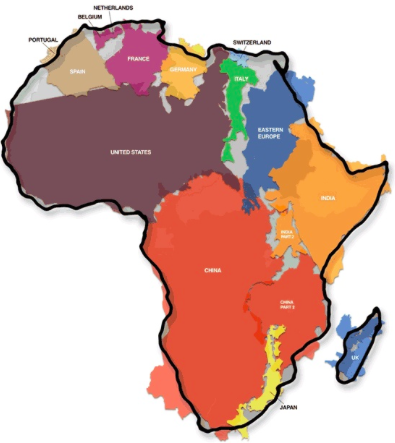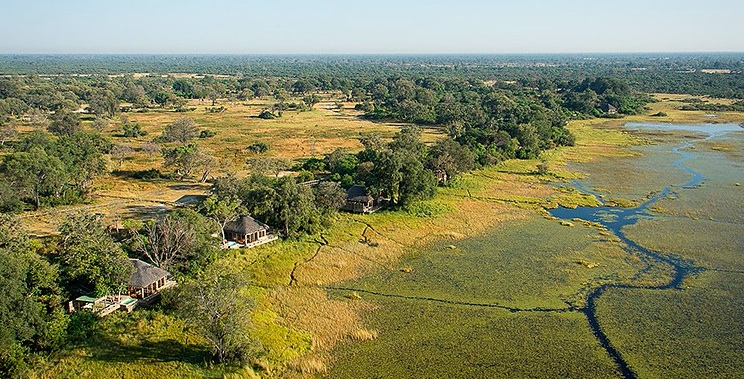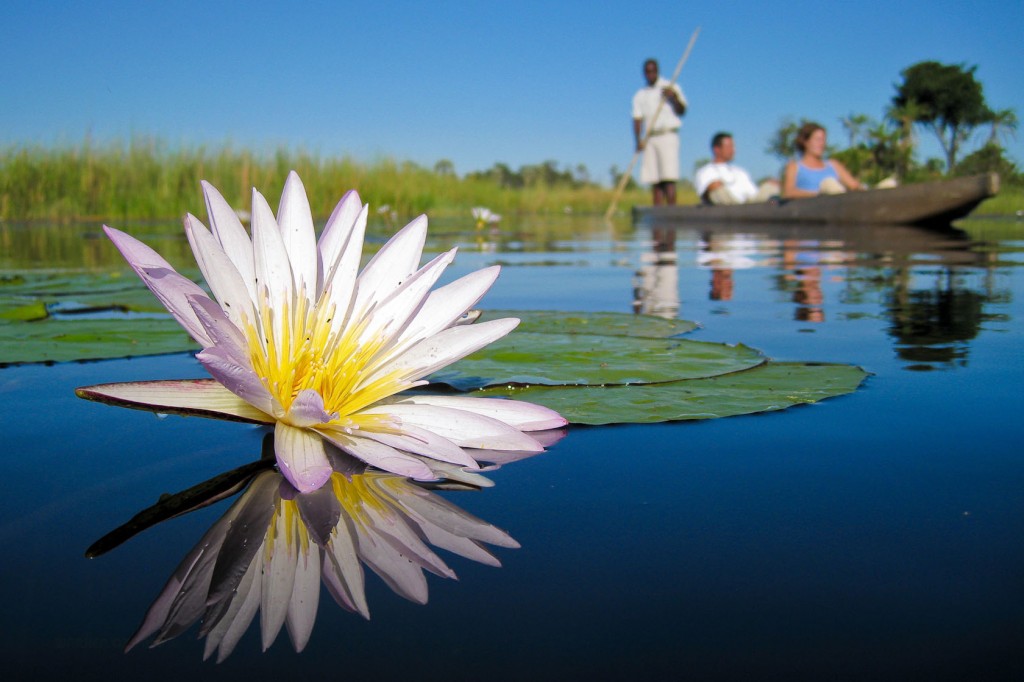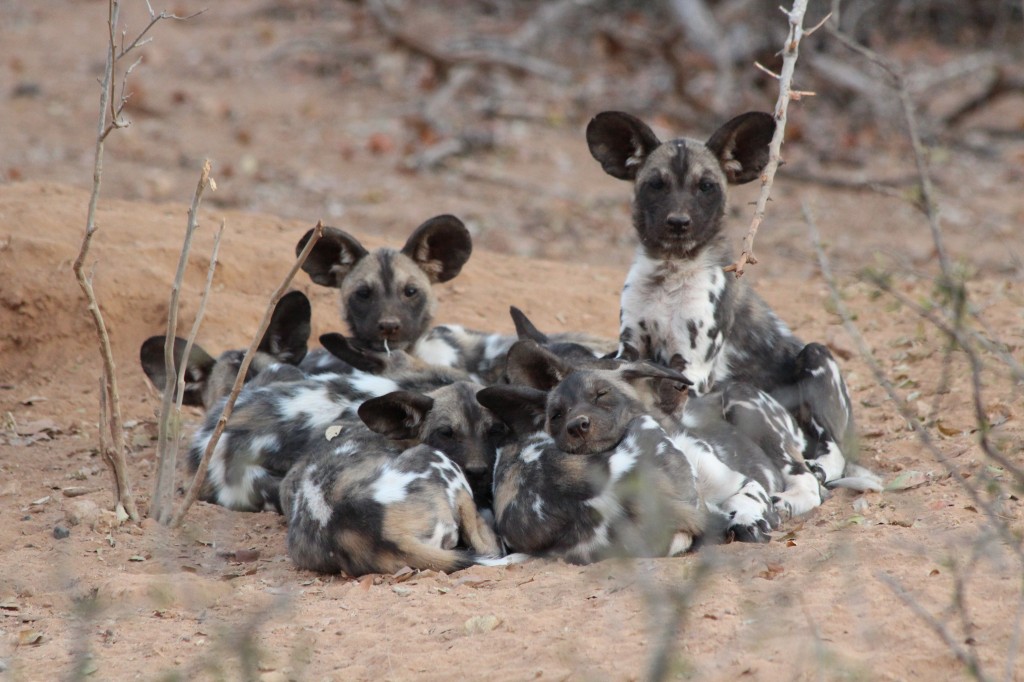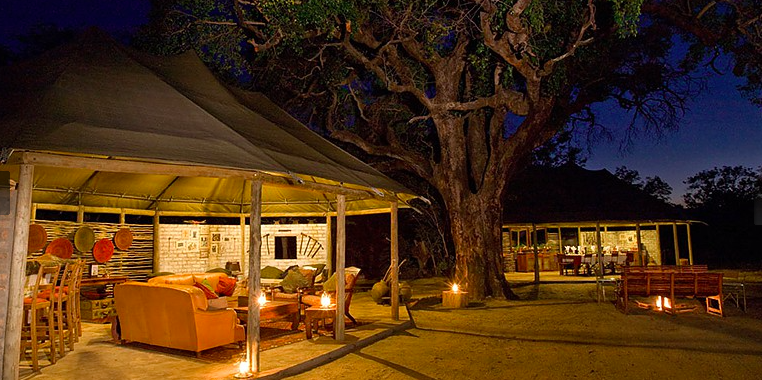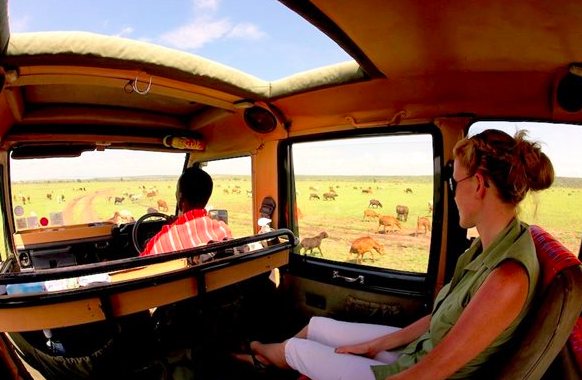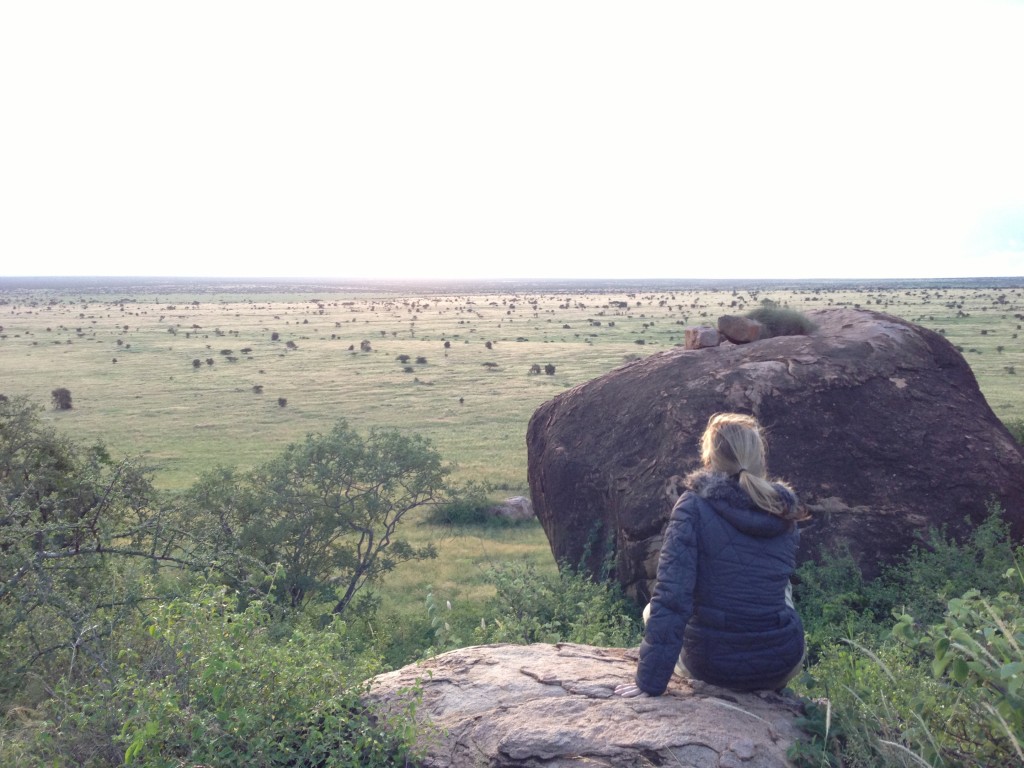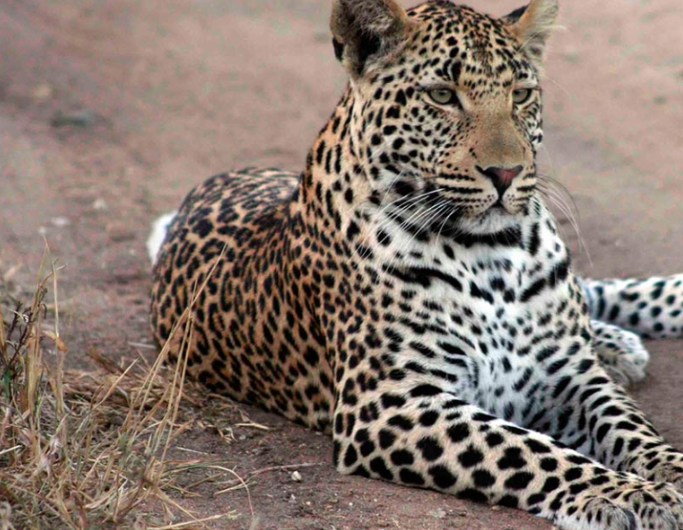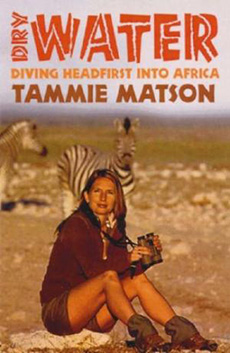Join me in Kenya’s famous Maasai Mara in July
There’s never been a better time to go to Kenya, as while tourist numbers are down you’ll get better deals to travel there than ever before. Kenya is EBOLA FREE (the ebola zone in west Africa is closer to London than it is to Nairobi) and the terrorist attacks that have been highlighted in the news, including the one at Westgate shopping centre last year, are nowhere near the safari areas. Those in the know are making the most of the great deals while they last!
I’ve managed to secure an amazing deal for a group to join me in the world famous Maasai Mara ecosystem from 15-21 July 2015, so if you’ve ever wanted to see this incredible country at its finest and in style, with your own personal zoologist on hand to ask about everything from the antelopes to the dung beetles, now’s your chance! If it’s half as good as my last group safari to Botswana then those who join me on this safari are in for a real treat.
As always on the tours I lead, I’ve picked the camps to ensure complete comfort in the bush, but the real advantage of these camps is the exclusivity. I always try and pick camps that operate in partnership with local indigenous communities, and this safari is no different. Plus, because the camps are in private game reserves, you get the huge numbers of wildlife without the huge numbers of people – and that makes a big difference when you’re on your safari of a lifetime – trust me!
So this safari kicks off in Nairobi, the capital of Kenya, with a night at the Ol Sereni Hotel, a hotel in a game park in the city (yes really!). We have a private viewing with the adorable orphaned baby elephants and their wonderful keepers at the David Sheldrick Wildlife Trust that afternoon, organised just for us, an experience you’ll never forget.
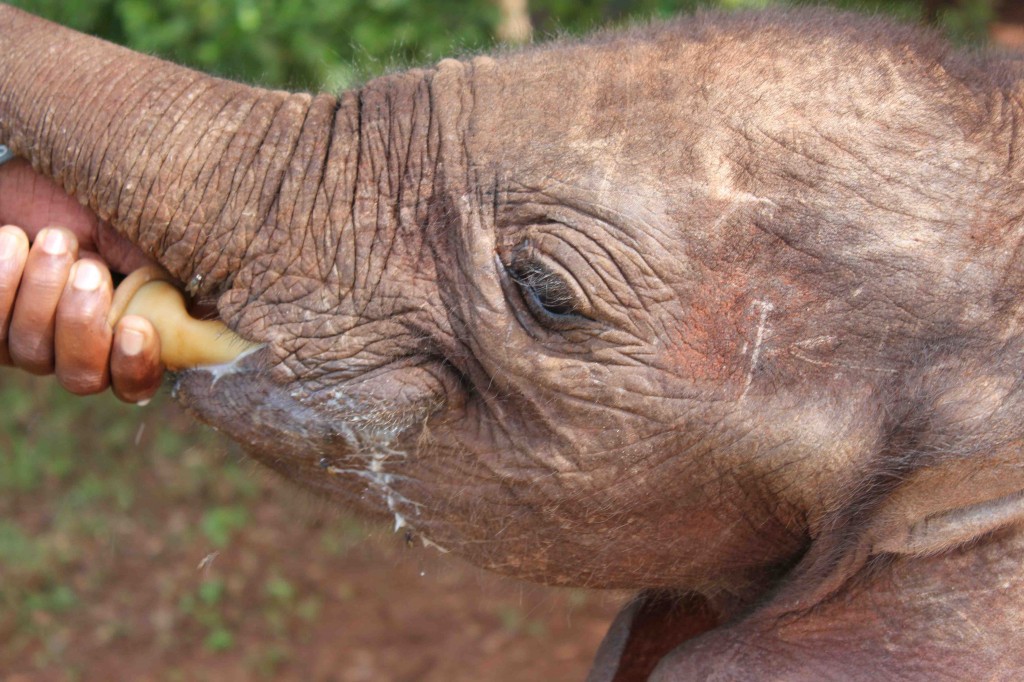
Baby elephant being fed by a keeper at the David Sheldrick Wildlife Trust, Nairobi (credit: Tammie Matson)
Then the next morning, it’s off to the Maasai Mara for the wildlife experience of a lifetime! I’ve intentionally picked July to go as that’s the start of the Great Wildebeest Migration. With nature of course there’s no guarantees, but July-October is generally the time of year when your chances are best of seeing the wildebeest migration in this part of Africa. The area is also famous for its big cats and has an abundance of plains species, including giraffes and zebras.
Our first camp for two nights is Naibosho Camp, a community partnership with the local Maasai community. It’s part of the 50,000 acre Mara Naibosho Conservancy and adjoins the Maasai Mara Game Reserve, which we will visit during our time there. Naibosho literally means ‘harmony’ and every aspect combines comfort with considerations for the environment, providing a luxury tented camp that touches the earth lightly and benefits the locals. Here you can expect to see everything you’d see in the Maasai Mara Game Reserve itself, but without the crowds.
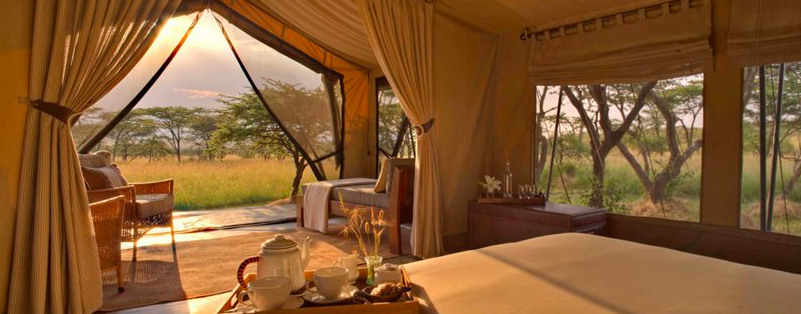
Tent at Naibosho Camp
Then we have 3 nights in two private houses, the Mara Bush Houses, in a different part of the Maasai Mara ecosystem. Each room has its own private ensuite and of course, the whole experience is tailored for you, with private vehicle and guides of the highest standard. This area is run in partnership with a local Maasai family, the Looseyia family.
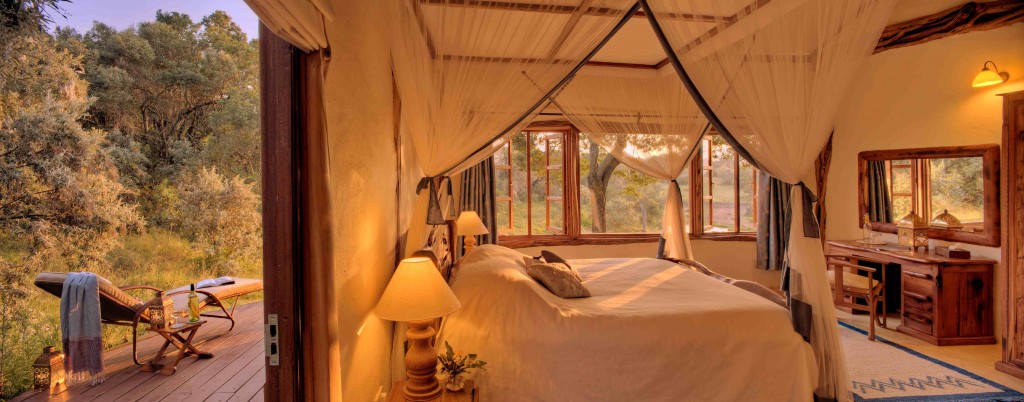
Mara Bush House room & verandah (Credit: Asilia)
If you’d like to join me on this exclusive Maasai Mara safari for an unforgettable week, plus our own private viewing at Daphne Sheldrick’s famous elephant orphanage, let me know by clicking here. Kids over the age of 12 are more than welcome as long as they are accompanied by a guardian/parent. Once you get in touch I’ll send you an itinerary and costing by email. Numbers are strictly limited (10-12) and places won’t last, so grab your spot now!
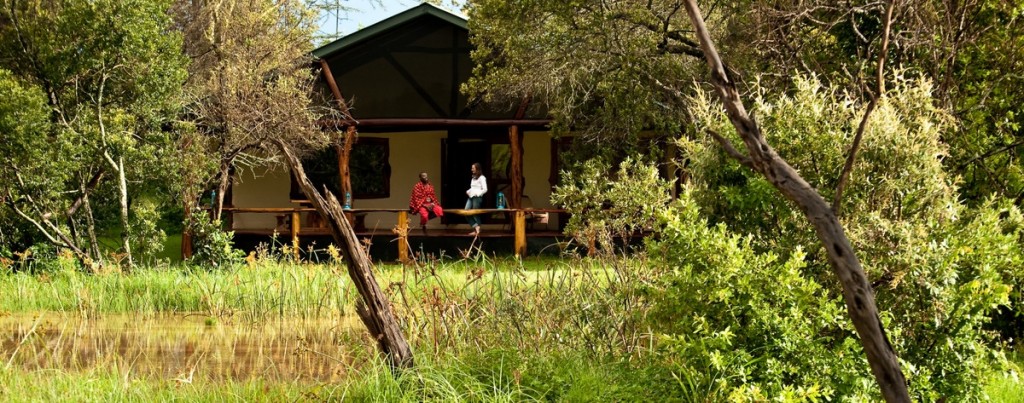
One of the Mara Bush Houses from the outside (credit: Asilia)
The Awesome Okavango
There are few places in the world where you can watch wild animals at very close range without them being affected by your presence. Botswana’s Okavango Delta is one of these rare places and if you’ve never seen it, believe me, it’s worth the visit.
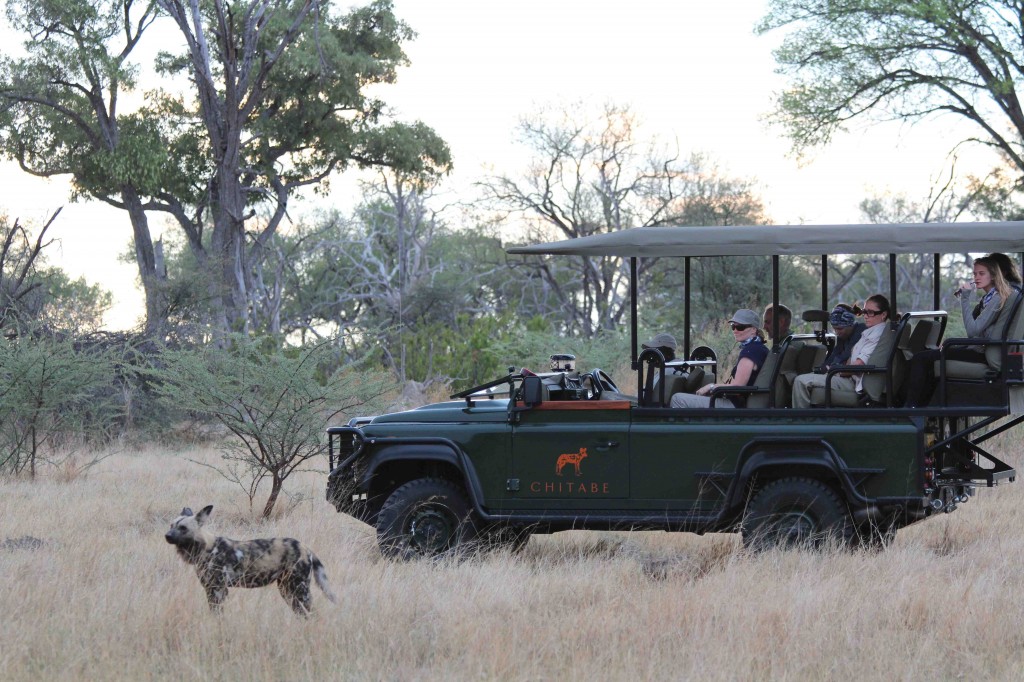
Up close and personal with an African wild dog at Chitabe – the most amazing area I’ve been to for experiences with predators who basically ignore vehicles
Ebola’s impact on elephants
Don’t worry, elephants don’t get ebola. Well not as far as I’m aware! But that doesn’t mean they won’t be severely affected by the disease in other ways. Indeed, elephant populations will very likely be impacted indirectly and I think we should be very concerned about what’s happening at the moment.
Next week, conservationists from all around the world will gather in Sydney for the World Parks Congress, including my very own co-founder of Let Elephants Be Elephants, Nadya Hutagalung, who will be speaking at the world leaders dialogues with the head of CITES, Director General of WWF, Ministers of Environment of Australia and South Africa, and several other esteemed influencers. They’ll be discussing the conservation of protected areas around the world. Meanwhile, a crisis is unfolding in Africa and in this case it’s something that the general public has a big role to play in solving.
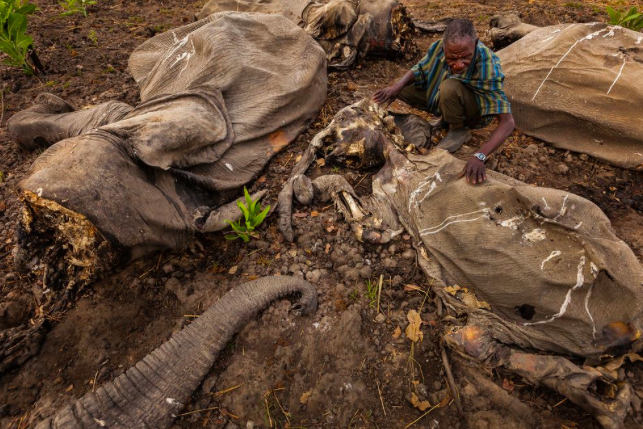
Scenes of devastation like this are becoming increasingly common in Africa, with 2/3 of Central Africa’s elephants having been illegally killed in the last decade (photo credit: National Geographic)
As you all know (because I do talk about it a lot!), African elephant populations are being devastated by the highest levels of poaching seen in decades. The rise in illegal killing is being driven by an increase in demand for ivory from Asia, especially China, and is the result of rising wealth across the region. At current rates of poaching, the African elephant population may have as few as 15 years left.
However a compounding threat is emerging in the form of ebola, due to the negative effect of the disease on tourism across sub-Saharan Africa. Anyone who’s been on safari in Africa can tell you how essential tourism is to the wellbeing of both local communities and wildlife in remote rural areas in Africa because of the far reaching socio-economic benefits it provides. When tourism dollars drop off, local indigenous people turn to alternative income options, like agriculture or even poaching, with devastating impacts on wildlife.
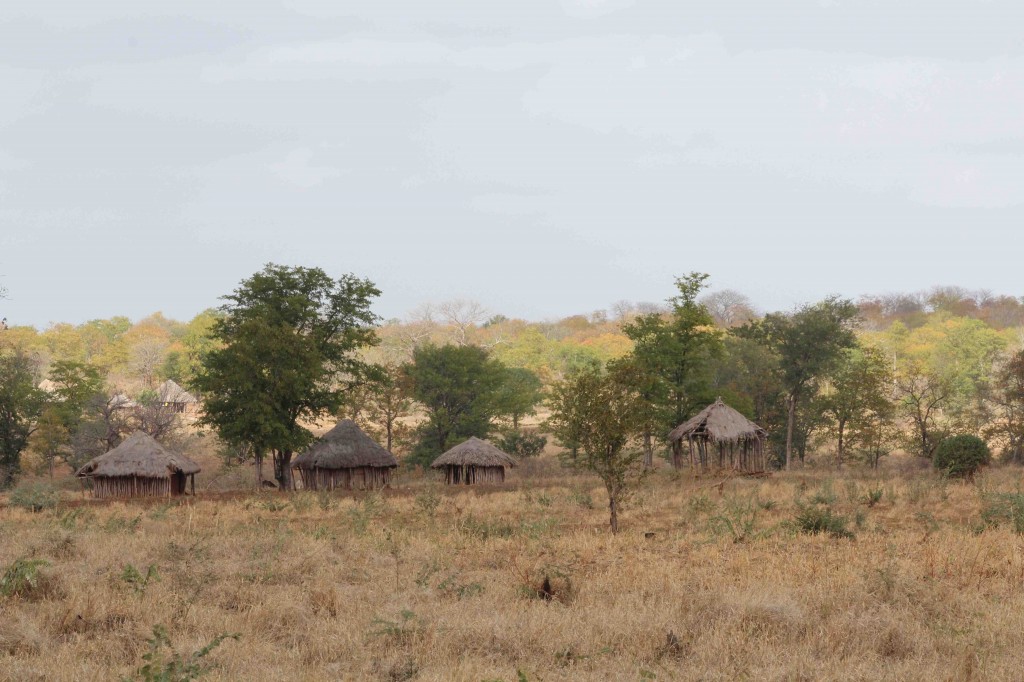
Land that is not providing economic opportunities to local people through tourism will be converted to other land uses, like agriculture, as I’ve seen happen in the Save Valley Conservancy when tourism dropped off in the early 2000s
Ignorance among the general public globally of the location of ebola-affected countries in relation to the rest of Africa is making things worse. So here are the facts. The ebola pandemic is confined to three main countries – Sierra Leone, Guinea and Liberia, all of which are in west Africa, a very long way from the typical safari destinations in places like Botswana, Namibia and Kenya. There are about 8000km between the ebola hotspot of Liberia and the safari areas in Botswana, and over 7000km between Liberia and Nairobi, Kenya . There are no direct flights to either region from Liberia – you have to connect through other countries. Liberia is closer to London, Paris and Rome than it is to these safari destinations in Africa.
Nonetheless, safari operators across sub-Saharan Africa are noticing a significant downturn in future bookings, as well as an increase in cancellations. There have been more cases of ebola in America than there have in sub-Saharan Africa in this outbreak, so you’d be more at risk there than on safari in South Africa. But the perception that safari areas could have ebola, even though they don’t and are miles away, is damaging tourism, which ultimately will make wildlife conservation efforts much harder. I think we’ll see the poaching of elephants and rhinos escalate as a result of the downturn in tourism in Africa if people don’t realise they are not in danger of contracting the disease by going on safari. And I’m not the only one who thinks so; according to this article in The Daily Beast, ebola could deal the death blow to many of Africa’s communal conservancies, which are crucial buffer zones around the continent’s limited national parks.
Since 2006, the number of elephants being poached annually has been rising, driven by an increase in the demand for ivory from Asia. A report just released in August in the Proceedings of the National Academy of Sciences reported that more than 100,000 elephants were illegally killed between 2010 and 2012. There are less than 500,000 elephants left in Africa, perhaps as few as 350,000. The current levels of poaching are not sustainable as they exceed the natural population growth rate of elephant populations.
We have very real reason to be alarmed because tourism is so essential to the continued survival of elephants in the wild.
There are very real solutions that are achievable and you can help.
- Never buy ivory. Tell your friends not to buy ivory when on holiday in places like China and Thailand. Visit http://www.letelephantsbeelephants.org and take the pledge not to buy ivory, then share the videos and facts with your friends on social media.
- Go on an Africa safari that supports local people and allows them to make a living for them and their families through tourism and conservation. If you’ve already booked a safari, don’t cancel it. You’re not at risk in the main safari countries as they do not have ebola and are taking serious measures to ensure it does not reach their shores.
I’ll be heading over to Botswana with a group of Australian and Singaporean travellers in a couple of weeks, feeling comfortable in the knowledge that there hasn’t been a single case of ebola there. It’s been heart breaking to watch the devastation unfolding in west Africa as ebola takes its horrific toll on the human population. Let’s hope that with all the international aid finally going into west Africa that the disease can be brought under control soon.
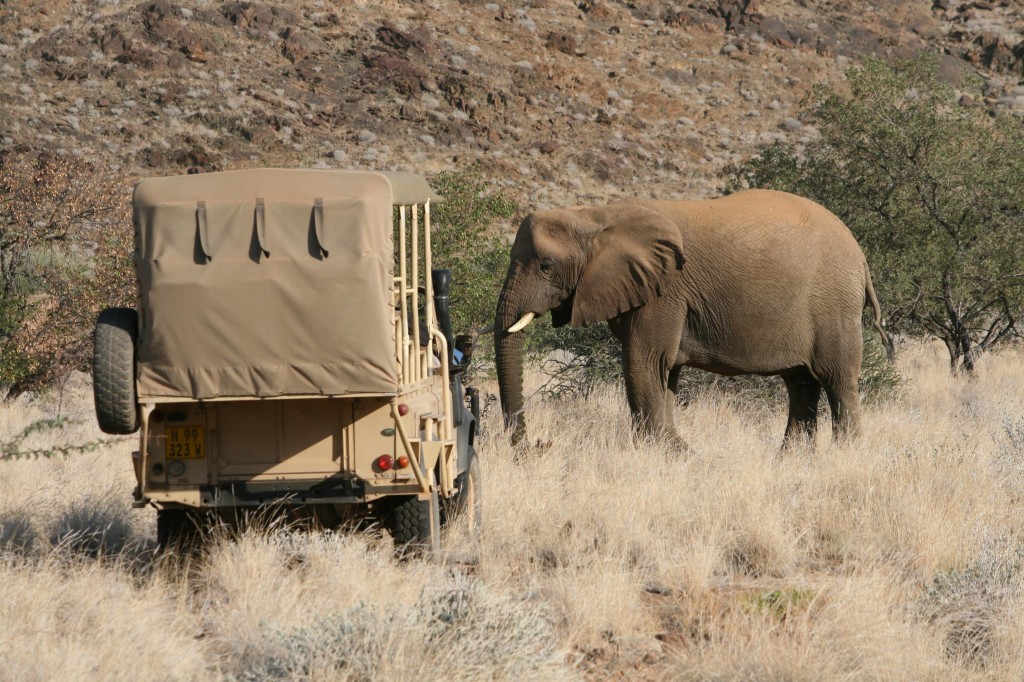
Getting up close to an elephant on safari is one of the most special experiences you’ll have in your life (I took this shot in Namibia)
Adventures in the Philippines
I’ve always wanted to check out the Philippines, and living in Asia for the last couple of years finally afforded us the opportunity to do a bit of exploring. Ever heard of Palawan? It’s a series of islands to the west of the main Philippines islands, quite off the beaten track and home of the famous Underground River, a UNESCO World Heritage site that is considered to be the world’s longest underground river. Conde Naste magazine recently awarded Palawan the best island award as part of their 2014 Travel Awards – and here’s why.
Having packed up our house and put all our possessions in storage in Singapore, Andy, the boys and I headed for Manila for three days of Let Elephants Be Elephants events with my LEBE co-founder, Nadya Hutagalung, organised by our fantastic Philippines team, Ian Angelo King and Joey Mead. More on the Philippines launch of LEBE in a future blog, but for now let me take you to Palawan, Asia’s ultimate, undiscovered adventure and ecotourism destination.
Travelling with two kids under the age of 5 is sometimes a challenge, but the thing about the Philippines is that the locals adore kids – and that really helps. The warmth and friendliness of the people we met, from complete strangers to the lovely people we stayed with, was one of the most memorable parts of the stay. Okay so there were extremes – I had my wallet stolen in Manila, while holding the hands of two small kids (pick-pocketed right out of my bag), and we did have a bad experience with the owner of one place we stayed, but the generosity of others just astounded us. Palawan feels a bit like Africa in that way; you never know what’s going to happen, but when you go with the flow, magic sometimes happens.
Thanks to the generosity of some folks we met in Manila at the LEBE Land Rover event, we ended up at a little piece of paradise called Lagen Island. A private island looked after by a lovely team of locals, overseen by our impressive guide Bilog, the place had its own luxury two bedroom, two bathroom villa, made largely of bamboo, and even a resident wild Oriental Pied hornbill, we felt like we’d pretty much landed in heaven. We bought fish and lobsters and squid from the local fishermen, cooked on the coals by Bilog and team, and ate like kings in front of a big camp fire right on the beach at night. Surrounded by shallow, warm water and its own sandy beach, it was the perfect place for us and two little boys to rest up.
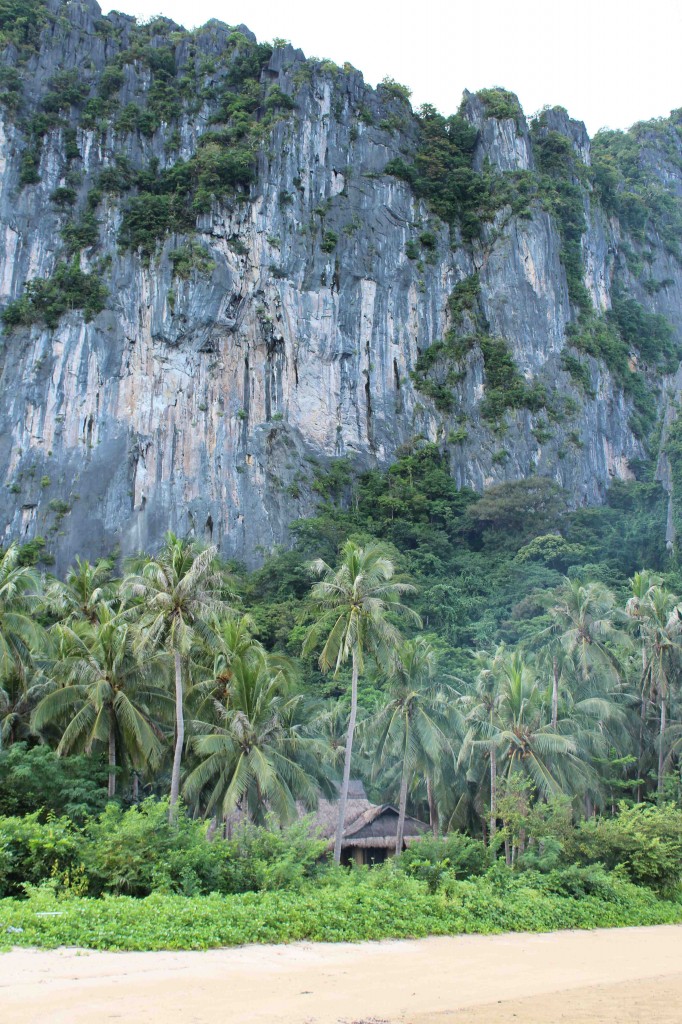
The little piece of paradise where we stayed on Lagen Island – you can book it here
The scenery in the El Nido area is something else. Think islands with gorgeous, soft sand beaches, towering limestone cliffs, fully vegetated forests and swaying palm trees. What struck us about the whole of Palawan was how undeveloped the place was – in a very good way. Most of the island still has intact forests and there’s not a high rise in sight, even in the main town of Puerto Princesa. We hope it stays that way. Electricity on Lagen Island is powered by generator and there’s no refrigeration, which means going by boat into town every few days to buy ice for the cooler boxes, a good excuse to enjoy that breath taking scenery again.
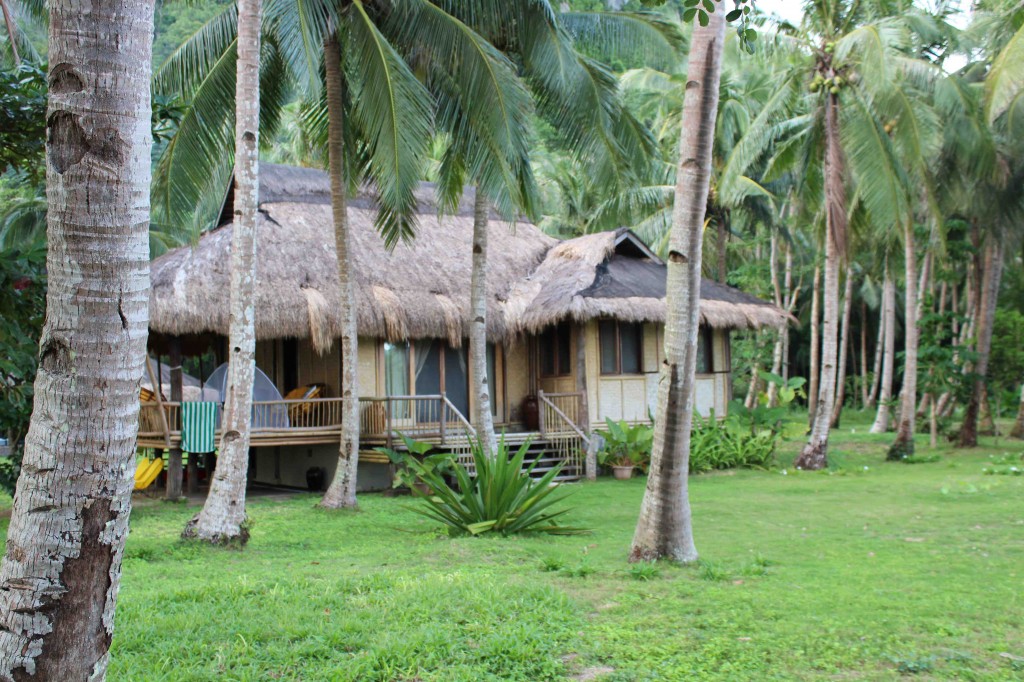
Close up of the villa where we stayed on Lagen Island – book it here
The famed Puerto Princesa Underground River was worth a visit for the impressive stalactites and the sheer adventure of being in the dark on a little boat while bats and swallows fly past your head. Solo, now almost 5, thought it was a grand adventure. Although bear in mind it’s a bit of a mission to get there, two hours on winding roads from Puerto Princesa, and then a boat ride across the ocean to the point where you actually enter the cave.
It’s the sunsets and the peace that will stay in our memories the most. The sense of space, the huge vibrant skies and the warm waters with incredibly tame fish that you can snorkel right up to without them swimming away is really a recipe for a great escape. You do have to keep your wits about you with the kids (life jackets, mosquito repellent, eyes in the back of your head!) but for adventurous families or couples I can’t recommend this place highly enough. A huge thanks to Vivien, Ed & Bilog for taking such good care of us. Lagen Island’s gorgeous private villa can be booked here.
While in Puerto Princesa, which is a 4 hour drive from El Nido, we stayed at the Legend Hotel and met the owners, Antonia and Wyden, who happened to be there at the time and were just the most hospitable people ever. The rooms were of a good standard for the very reasonable price, clean and very big, and more than did the trick for us, plus the breakfast spread was ample for our family. The staff went out of their way to meet all our needs, which really helps when traveling with kids.
Travelling with an almost one year old, Shep, especially one with very red hair and incredibly white skin, was an experience in itself. Everywhere we went, locals described him as a ‘talking doll’, and he really got the celebrity treatment. We would have found it a lot more challenging traveling there if we hadn’t had our wonderful Philippino nanny, Julie with us the whole time. Julie wasn’t just our nanny while there – she was translator, guide and body guard for Shep from all the ladies who wanted to hold him as he literally stopped traffic!
All in all, other than the incredible islands, the warmth of the Philippino people was one of the things we loved the most about travelling there. At the moment, El Nido doesn’t even have an ATM, so it’s really a tourism hotspot waiting to happen. Our hope is that as El Nido opens up to the world, it develops in a way that keeps intact its reefs, forests and islands, because something this magnificent really is worth saving.
Last chance to grab discounted Okavango safari spots!
Imagine that you’re sitting back with a nice sundowner, with a bowl of nibbles within reach, looking out over the magnificent wetlands of the Okavango Delta at sunset, knowing that a sumptuous dinner and a luxury room awaits you on your return to camp…. Well if you’ve ever wanted to do it, here’s your chance to do it with me in a couple of months time! It’s just over two months til I head to the Okavango Delta, Botswana with a group of Aussies and Singaporeans, and I’m starting to get excited. Most people travel to the Okavango in the peak dry season (June-October) but what many don’t know is that the green season is equally awesome. Crashing thunderstorms like only Africa can provide, baby animals being born and green grass rather than brown, are just a few of the season’s draw cards. Of course, it’s also significantly less expensive to travel then.
Okavango Magic, Botswana
The week before last I went a shade of envy-green…. After finishing up at Earth Hour after 11 years with WWF, my husband Andy Ridley, who, as you all know, I love and adore, travelled to the Okavango Delta in Botswana – without moi! There he experienced the pure magic that only this part of Africa offers. There is simply nowhere like the Delta. Take a look at his photos to see why I was so jealous…. Andy has written the captions below each photo. If you’d like to join Andy or me in Botswana next year, or if you’d like me to arrange your own personalised African safari through Matson & Ridley Safaris, drop me a line now! Remember that safari camps in the Okavango are incredibly popular, so if you want your choice of camps it’s best to start planning a year in advance.
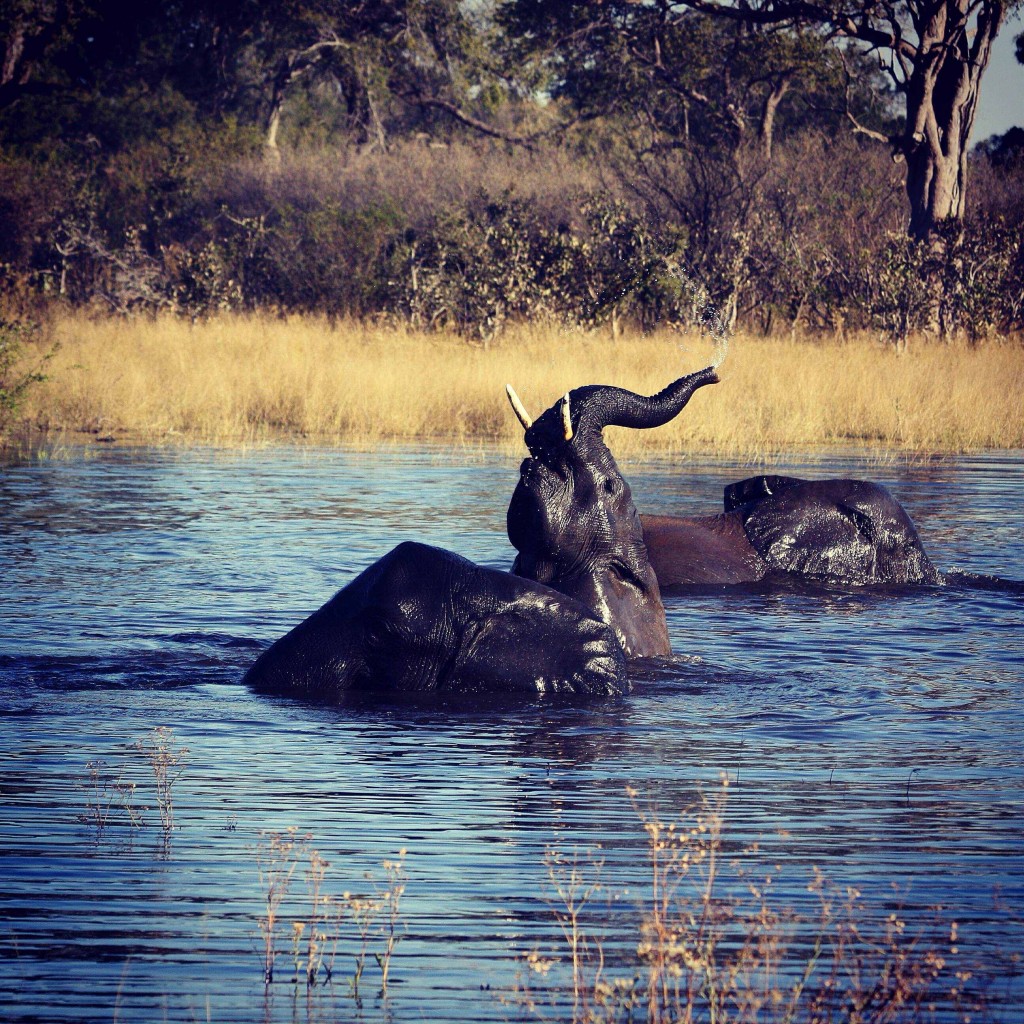
Heading out into the Delta from Vumburra Plains Camp, we came across this herd of elephants playing.
Kenyan Elephant Dance Safari Price Slashed!
I’ve got great news! Thanks to the kind folks at Asilia Africa, my Kenyan safari in July next year (2015) is now going for about 10% less than previously advertised. That’s a huge saving! You won’t get a luxury safari like this in these exceptional wildlife areas at this price anywhere else, so why not join me?
My favourite safari destinations in Africa
Africa’s a big place. Actually, really big. You can fit all of China, India and much of Europe into it’s vast landscape. So when you’re planning to go on safari, where do you start? And once you’ve been once, and you’ve got the Africa bug, where do you go next?
So what’s your favourite safari destination? It’s a tough question, because they all have their merits. In this blog I’m going to have a crack at sharing my current top 5 safari destinations and let you make up your mind where’s best for you to live out your dream.
1. Okavango Delta, Botswana
It’s not just that the Okavango is literally teeming with wildlife in the most beautiful palm tree lined wetlands you can imagine, it’s that Botswana itself is such a wonderful conservation success story. With strong and stable political leadership, a healthy economy and 45% of the population being employed in tourism, it’s no wonder this land-locked country at the centre of southern Africa is doing so well at conserving its wildlife.
The human population is only about 2 million and most of the country is classified as desert, so you don’t get the human pressures that you get in other more highly populated African nations (violent crime being one of them). You’ll see all sorts of interesting critters in Botswana, including all the big cats, African wild dogs, the sitatunga, a wetland dwelling antelope I have yet to feast my eyes on, and the largest elephant population in the world. Besides that, who wouldn’t want to explore nature in a mokoro?
Suggested Camps: Chitabe (for predators galore), Xigera (for wetlands, mokoros & sitatungas), Vumburra Plains (for pure luxury in my kind of heaven).
2. Zimbabwe
This choice might surprise you. Zimbabwe is where I started my African journey back in 1993 on a safari with my Dad at the age of 15 in the Save Valley Conservancy, and it’s still a special place to me. The Save Valley Conservancy remains one of the best places in Africa to see rare African wild dogs. If you go during June, July, August, you’ve got a very good chance of seeing pups at dens, and that is just the cutest thing ever. If you arrange to visit through me, you can also meet the team running the rhino anti-poaching operation, Bryce and Lara, and the Turgwe Hippo Trust‘s Karen Paolillo, who has been studying the area’s hippos for decades.
I also love Hwange National Park. It feels like old Africa to me, and the wildlife there, especially in the dry season (June-Oct), is spectacular. I’ve had lions walk right beside the open vehicle in Hwange, and elephants in their hundreds lining up at waterholes. The thing about Zimbabwe is that many people aren’t traveling there because of the political instability brought about by the current regime. But I’ve been traveling there with my family in the last five years without any troubles, and the people are as friendly and welcoming as ever. And of course, on the border of Zimbabwe and Zambia is the famous Victoria Falls, which you have to see at least once in your life to have your breath literally taken out of you.
Suggested Camps: Sango (Save Valley Conservancy), Little Makololo (Hwange National Park), the River Club (at Victoria Falls, on the Zambian side near Livingstone)
3. Kenya
I only recently ventured into East Africa, having spent the last couple of decades exploring what southern Africa has to offer, and man, was I blown away by Kenya! They’ve been doing safaris in style there for a long time, and it shows in the quality of the experiences they can offer. One very good reason to go to Kenya is that it has the famous great wildebeest migration in the Masai Mara. You have to time this carefully to make sure you’re in the right place at the right time. I am taking a group of up to 12 to Kenya in July next year (safari details here) and there are still spots available for now, but please don’t wait to register your interest as my other two trips to Namibia and Botswana sold out in record time!).
When I got off the plane at Ol Donyo in the Chyulu Hills, nestled between Amboseli and Tsavo National Parks, I looked across the vast grass plains and up to the gobsmacking sight of Mount Kilimanjaro, and I was speechless. The key with traveling in Kenya is to avoid the crowds of minibuses and go with a good operator that offers you exclusivity with the wildlife. And as always, I suggest staying at lodges that operate in partnerships with local communities and conservation organisations, so you know your tourism dollars are helping make a difference on the ground. Kenya is also the home of Daphne Sheldrick’s famous elephant orphanage, a truly special experience that has brought many tears to the eyes of those who visit.
Suggested lodges: Naibosho (Masai Mara – a luxury, community partnership lodge), Ol Donyo (near Amboseli National Park, operating in partnership with the Big Life Foundation and local Masai community)
4. Namibia
Having lived in Namibia for six years, studying black-faced impalas and later working on human-elephant conflict, I’ve still got a soft spot for this vast desert land. You won’t get a sense of space like this anywhere else in the world. The silence in the Namib desert can be overwhelming when you live in a noisy city, and can actually take a bit of adjusting to! Spotting unique desert creatures like oryxes, springboks and ostriches on the desert plains is one of the best things about being in Namibia, as is seeing the vast congregations of animals at waterholes during the dry season (July-October).
Etosha National Park is famous for its white elephants (coated in white dust from the Etosha salt pan) and is one of the best places in Africa to see black rhinos. I also love the north west of Namibia, the Skeleton Coast and Damaraland, where you get desert adapted lions and elephants eking out an existence alongside traditional ethnic groups like the ovaHimbas. My absolute favourite camp in Namibia? Serra Cafema, for sure. Up on the border with Angola, right at the top of Namibia, on the Kunene River, it’s the most remote camp in Africa and going there is like going to the moon (in a very good way!).
Suggested camps: Ongava (for Etosha & rhinos), Serra Cafema (for having your mind blown by desert solitude), Desert Rhino Camp (Damaraland, for tracking desert rhinos & supporting Save The Rhino Trust)
5. Okay so now I’m up to number five, and of course, this is not easy, as there are lots of other great options for safaris that I’d like to include here, like South Luangwa National Park in Zambia (real wild Africa with tonnes of elephants) and even some I haven’t been to that I really want to see, like Ethiopia, Tanzania and Mozambique, but I think the final choice for this blog, based on what I’ve seen to date, has to be Kruger National Park, South Africa.
There’s really no other national park like Kruger for an awesome ‘big five’ experience. But it’s the private reserves on the edge of the park that you want to stay in. South Africa offers so many luxurious and mid range options for families, couples or groups, that it’s hard to know where to start. You’ll get a lot for less price in South Africa because there’s a lot of competition and very high standards of accommodation. It’s a great starting point for a first safari, especially for families as they specialise in this. At Tinstwalo last year with then 3 year old Solo, we saw the entire big five, including an incredible leopard sighting and mating lions, in 36 hours!
There are excellent malaria-free reserves in South Africa too, guides that specialise in giving kids an amazing learning experience, and you can always add on a few days exploring Capetown and the magnificent mountains and wineries of the region.
Suggested camps: Tintswalo (for luxury, incredible wildlife & families), Grootbos (2 hours from Capetown, for families & marine life)
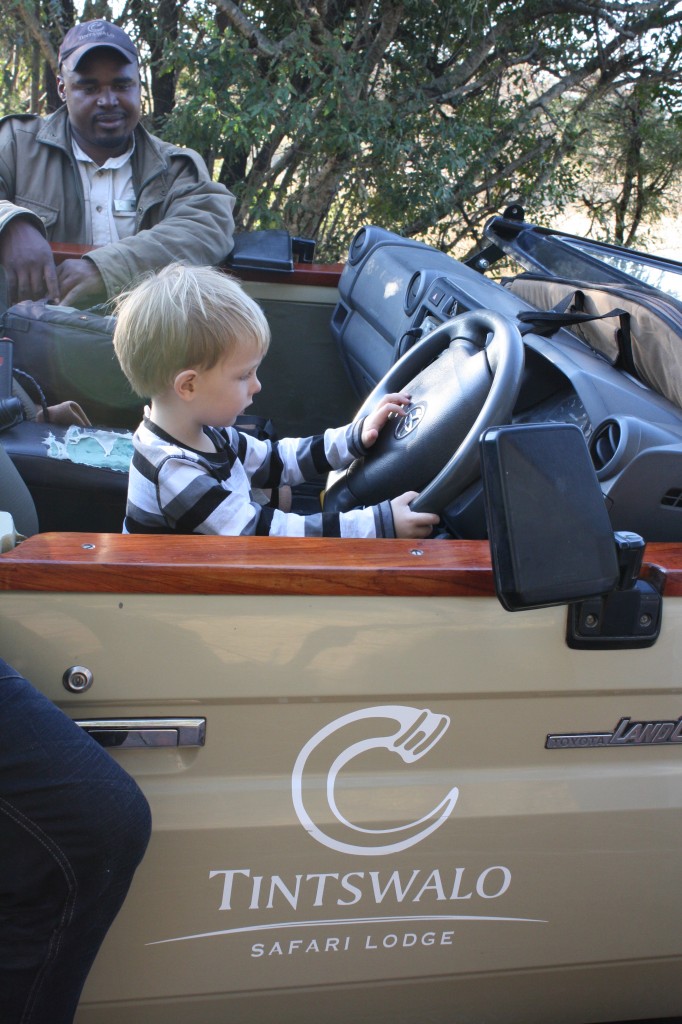
Solo (then aged 3) got to pretend to drive the Land Cruiser while on safari at Tintswalo, South Africa, which was definitely a highlight of the trip for him.
What to pack for your African safari
So you’re off on the safari of a lifetime… You’ve been dreaming of this for years and the last thing you want to do is end up out in the middle of the bush without everything you need to optimise your African experience… If this is you, then this is the blog for you.
Elephant Dance Safari, Kenya
I’m delighted to have had huge interest in my guided safaris as part of my new ethical safari business, Matson & Ridley Safaris. My Okavango Delta safari for this year sold out in a month, the Namibian one planned for September 2015 has only 3 places left (so get in quick if you want to be on this one!) and I reckon it’s time to let you know about another one I’ll be guiding next year in July… to one of the most famous parts of Africa – Kenya!

